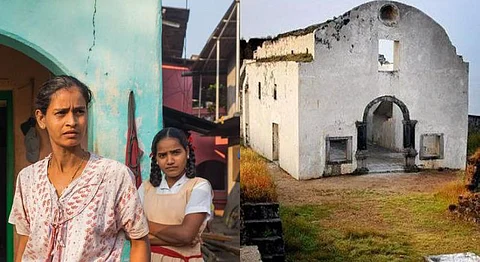
- HOMEGROWN WORLD
- #HGCREATORS
- #HGEXPLORE
- #HGVOICES
- #HGSHOP
- CAREERS
- ABOUT US
- CONTACT US

Of the many cultural influences, India continues to reflect as a result of colonisation or migration, one that is usually overlooked is that of the Portuguese. What began because of Vasco de Gama’s venture to India and later spread through political acquisition has left several facets behind. This includes food, clothes, lifestyle, and so much more.
By 1580, the Portugese has control over Goa, but also Chaul, a town in the Raigad district of Maharashtra. With Portuguese expansion also came the influences of Christianity, and as years went on, the region seemed to have become more Catholic than Hindu. Only about 8 kilometres away from Chaul is Korlai, a town that retains most of its Portuguese influence to date, including the language.
Korlai’s ‘Kristi’ community, borrowing from Christianity of the Portuguese converses in a creole language –– one that is developed by mixing different languages into a new, simple, and stabilised one. And so, the language spoken here is Korlai Creole Portuguese, budding from the amalgamation of Marathi and Portuguese. It is also referred to as the ‘Christi’ language. People who speak this language also call it na ling, meaning ‘our language’.
The move toward Christianity in Korlai was not lateral. The Portuguese policy called for conversion to their faith of Christianity, but the story in Korlai took its own turn. The lower caste Indians chose to convert willingly in hopes that it would award them a higher status. In turn, they ended up being othered on both ends –– for being of a lower caste, as well as Christians. The distance from the Marathi-speaking natives played a part in the creation of Korlai Creole Portuguese spoken even now. Even the handing over of Chaul to the Marathas could not dilute the language.
As with many such hybrid languages, it is uncertain how much longer Korlai Creole Portuguese will continue. Its presence now has been characterised by the fact that Korlai is a tiny region that barely has any direct connections to more populated Marathi regions. Almost like an echo chamber, surrounding Marathi influences rarely, if ever, trickled into Korlai.
Korlai remains a scenic coastal town with a rich and complex history and makes for a great travel experience. To reach the village, make your way to Alibaug in the way most convenient from your location, and Korlai will be an auto-rickshaw ride away.
The Korlai Portuguese Fort is a goldmine of the time of the Portuguese rule and sets the context for everything about the village. True to coastal town cuisines, Korlai also offers a range of fresh seafood (bombil, prawns, and so much more) prepared in various ways. With no real infrastructural or economic development in Korlai, the community is made of small families that are not too financially well off. With local practices to support them, they function day-to-day but remain a close-knit community.
Marathi and Portuguese cultures did not come together willingly or in harmony back in the 1500s in this region, but it is the identity of the inhabitants of Korlai. Their special language sets them apart but also pushes us to see culture and historical influences in a new light.
If you enjoyed reading this, we suggest you also read:
